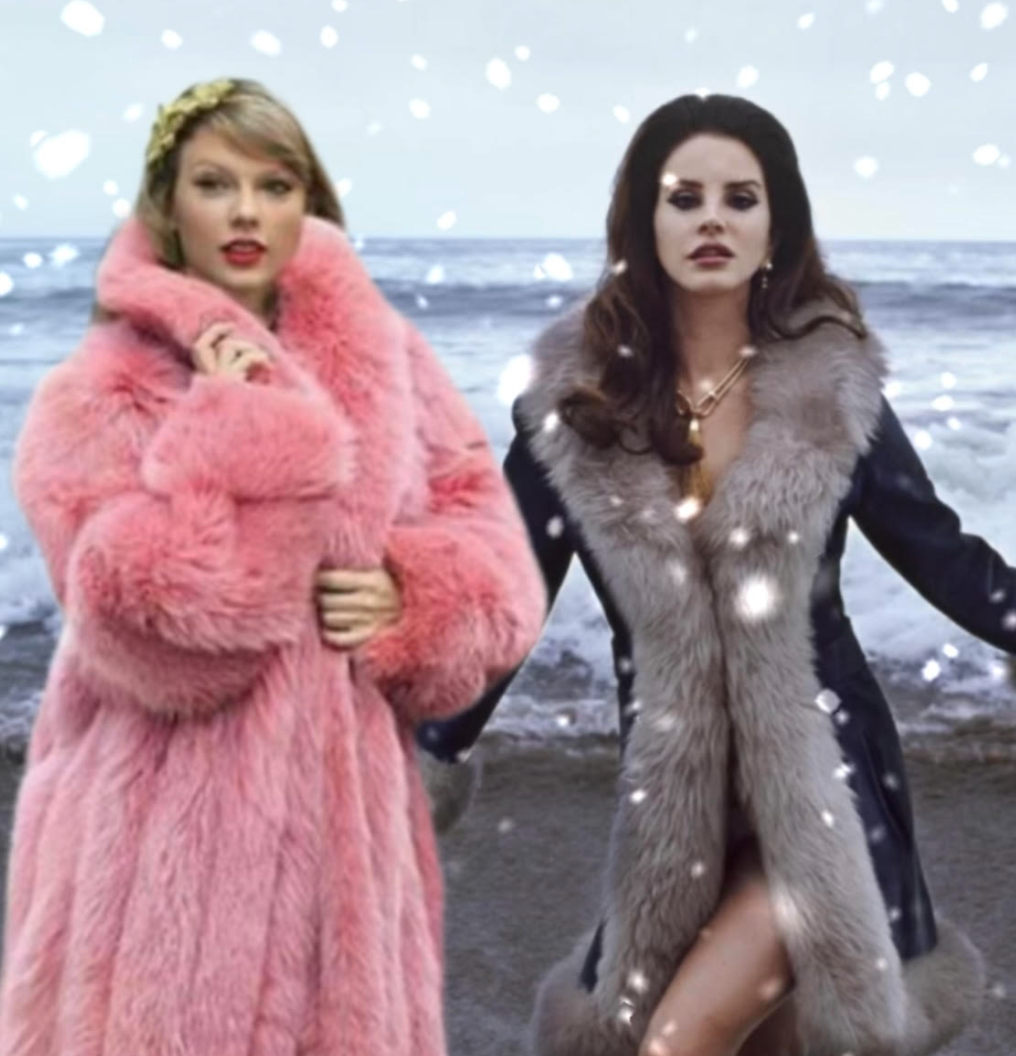Even when “Snow on the Beach” was “first” released on the first iteration of Taylor Swift’s Midnights, “all the way back” in October of 2022, it was already a stretch to liken something “weird” (i.e., falling in requited love with someone) to snow falling on the beach. Because if the past several years should have taught people—even those in a protective bubble like Taylor Swift and Lana Del Rey—anything, it’s that formerly “absurd” weather phenomena are now to be the norm (along with arbitrarily unleashed novel viruses). Nay, they are the norm. And, although some wouldn’t expect it, it is, in fact, rising temperatures that can eventually result in extremely cold weather scenarios. More specifically, “Ice Age” weather scenarios.
Take, for example, the “cold blob” of water that has come to roost in the area south of Greenland. Its origins are a result of melting glaciers—melting ever more rapidly as we keep ordering our useless shit from the internet. And yet, despite the scalding temperatures that are visiting Earth at present, the effect those temperatures have on “water blobs” like the one south of Greenland influence the flow of the Gulf Stream, which is responsible for “ferrying” warm water to the north. If that flow is compromised enough, the litany of consequences could include, but are not limited to, a steep drop in temperatures throughout Europe, rising sea levels on the East Coast and more ferocious, unpredictable hurricanes. And that’s just on the Atlantic side of things. The Pacific has its own barrage of ticking time bombs.
The bottom line, of course, is that seeing snow on the beach would hardly be “surprising” or “unusual” in an Ice Age kind of setting. Or just a post-climate apocalypse one. A “setting” that Swift herself is arguably more responsible for than Del Rey, with the former being an avid private jet user and the latter being just a garden-variety lover of casual joy riding in her car (#justride). Nonetheless, they relish singing, in “angelic” voices on the newest edition of the song (featuring “More Lana”) from Midnights (The Til Dawn Edition), “Are we falling like snow at the beach/Weird but fuckin’ beautiful?” To be clear, it’s neither that weird nor is it especially “beautiful,” so much as utterly unsettling and chilling (no pun intended).
Yet the eeriness of such a sight is taken as an opportunity for Swift and Del Rey to try their hand at some overly wistful and romantic Jane Austen shit. Austen, however, gets a pass for being so maudlin about falling in love because she lived in an era where climate change was nary a thought in one’s mind (despite the fact that she witnessed the height of the British Industrial Revolution). She could afford to be “chimerical.” Technically, so can Swift and Del Rey, who comprise the echelons of wealth that will be able to, in some form or other, shield themselves from the climate change fallout (perhaps with an actual fallout shelter).
With Del Rey being given the opportunity on the new version of “Snow on the Beach” to sing a full verse, she croons, “This scene feels like what I once saw on a screen/I searched ‘aurora borealis green.’” This, too, brings up the fact that even the Northern Lights aren’t immune to the taint of climate change either. Like the stars in the sky dimming as a result of light pollution, aurora borealis will suffer from its own dimming—but, in this case, due to alterations in cloud formations that will inevitably obscure the brilliance of the lights. So yes, Del Rey will actually need to search on a screen for the kind of erstwhile “aurora borealis green” she’s looking for.
Barring climate change as a reason for snow on the beach, there’s also the consideration of how many beaches already do offer up snowy tableaus regularly. For example, Kings Beach in Tahoe, Chatham Lighthouse Beach in Cape Cod, Unstad Beach on Norway’s Lofoten Islands (where you can see aurora borealis), Sopot Beach in Sopot, Poland and Loch Morlich Beach in the Scottish Highlands. Then you have the beach that made snow on the beach truly famous: the one in Montauk where a large portion of Eternal Sunshine of the Spotless Mind takes place. And perhaps Swift got her inspiration from this very movie, what with Joel and Clementine starting to fall back in love on the now snow-dappled beach they initially met on.
And yet, snow is just as liable to become part of “the new normal” (that hideous phrase people like to use to “normalize” the long-forewarned effects of capitalism) in places perennially associated with “nothing but sunshine.” Case in point, one beach that wasn’t accustomed to getting snow until recent years is Torre Lapillo in Puglia. The unlikely snowfall that occurred there in 2017 dredged up a five-hundred-year-old prophecy from Matteo Tafuri that stated two days of snowfall in Salento would be part of heralding the apocalypse. The snow came again in 2019. So surely, we’re that much closer. If not to the kind of apocalypse that signals a bang so much as a whimper, then at least the kind that standardizes snow on the beach to a point where Tay and LDR’s simile becomes increasingly less meaningful.
As for Wallace S. Broecker, the preeminent scientist who made the term “global warming” take off in the 70s (before Dick Cheney decided that sounded too “icky” and made “climate change” the phrase instead), he’s likely not hearing the song from beyond the grave with much glee. After all, he had urged the world, before his death in 2019, to take far more drastic measures to avoid the “many more surprises in the greenhouse” to come. Trying to make snow on the beach seem like something “abnormal” while we’re already living in a climate change scenario certainly isn’t going to help with that.




















